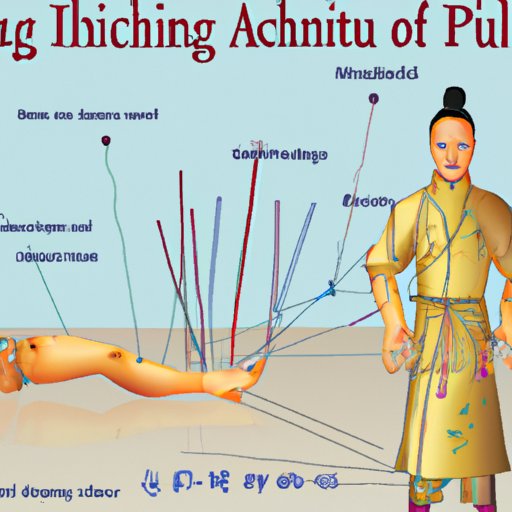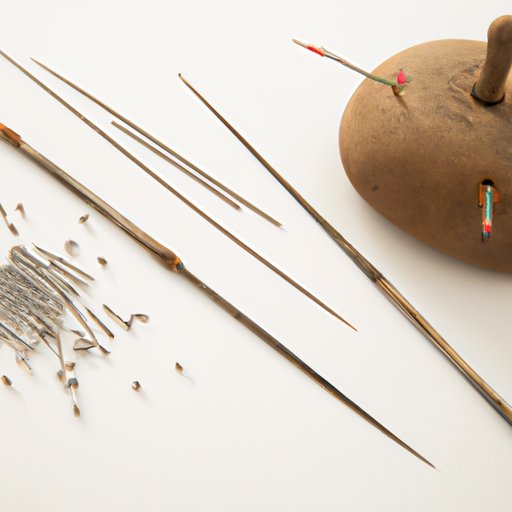Introduction
Acupuncture is a form of traditional Chinese medicine that involves inserting thin needles into specific points on the body. This ancient healing technique has been used for centuries to treat a variety of ailments and conditions, from chronic pain to digestive issues. But when was acupuncture invented? This article takes an in-depth look at the history of acupuncture to answer this question.

A Historical Overview of the Ancient Origins of Acupuncture
The earliest records of acupuncture date back to around 100 BC in China. According to historical evidence, acupuncture was first described in the Huangdi Neijing, or “Yellow Emperor’s Classic of Internal Medicine”, which is one of the oldest medical texts in the world. The text describes the use of needles to treat various ailments, including headaches, muscle pain, and digestive problems.
From its beginnings in ancient China, acupuncture began to spread throughout the world. By the 16th century, the practice had reached Japan, where it was further developed and refined. In the 18th century, acupuncture was introduced to Europe, where it gained popularity among physicians and the public alike. By the 19th century, acupuncture had become firmly established as a medical practice in many countries around the world.
Exploring the Role of Traditional Chinese Medicine in the Development of Acupuncture
Traditional Chinese medicine (TCM) played a crucial role in the development of acupuncture. TCM is based on the idea that the body is made up of energy pathways, or meridians, that connect all the organs and tissues. It is believed that when these pathways become blocked, illness and disease can occur. Acupuncture is thought to unblock these pathways and restore balance to the body.
The techniques used in traditional Chinese medicine are similar to those used in contemporary acupuncture. For example, both practices involve the use of thin needles to stimulate specific points on the body. However, modern acupuncture also incorporates a range of other techniques, such as moxibustion, cupping, and electrostimulation.
Conclusion
This article has explored the ancient origins of acupuncture, tracing its invention and development from ancient Chinese medicine to its modern practice. Evidence suggests that acupuncture was invented in China around 100 BC and was further developed and refined in Japan and Europe in later centuries. It is clear that traditional Chinese medicine played a major role in the development of acupuncture, with many of its techniques still used today.
This article has provided an overview of the history of acupuncture, examining its ancient origins and exploring the role of traditional Chinese medicine in its development. Further research is needed to fully understand the evolution of acupuncture over time and its impact on modern medical practice.
(Note: Is this article not meeting your expectations? Do you have knowledge or insights to share? Unlock new opportunities and expand your reach by joining our authors team. Click Registration to join us and share your expertise with our readers.)
